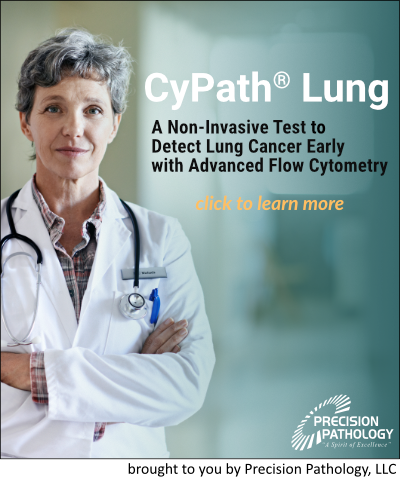“Sputum analysis by flow cytometry; an effective platform to analyze the lung environment”
PLoS ONE – August 17, 2022
Authors
Bederka L.H., Sanchez JR, Rebeles J, Araujo PR, Grayson MH, Lai S-C, et al.
Abstract
Low-dose computed tomography (LDCT) is the standard of care for lung cancer screening in the United States (US). LDCT has a sensitivity of 93.8% but its specificity of 73.4% leads to potentially harmful follow-up procedures in patients without lung cancer. Thus, there is a need for additional assays with high accuracy that can be used as an adjunct to LDCT to diagnose lung cancer. Sputum is a biological fluid that can be obtained non-invasively and can be dissociated to release its cellular contents, providing a snapshot of the lung environment.
We obtained sputum from current and former smokers with a 30+ pack-year smoking history and who were either confirmed to have lung cancer or at high risk of developing the disease. Dissociated sputum cells were counted, viability determined, and labeled with a panel of markers to separate leukocytes from non-leukocytes.
After excluding debris and dead cells, including squamous epithelial cells, we identified reproducible population signatures and confirmed the samples’ lung origin. In addition to leukocyte and epithelial-specific fluorescent antibodies, we used the highly fluorescent meso-tetra(4-carboxyphenyl) porphyrin (TCPP), known to preferentially stain cancer (associated) cells. We looked for differences in cell characteristics, population size, and fluorescence intensity that could be useful in distinguishing cancer samples from high-risk samples. We present our data demonstrating the feasibility of a flow cytometry platform to analyze sputum in a high-throughput and standardized matter for the diagnosis of lung cancer.

